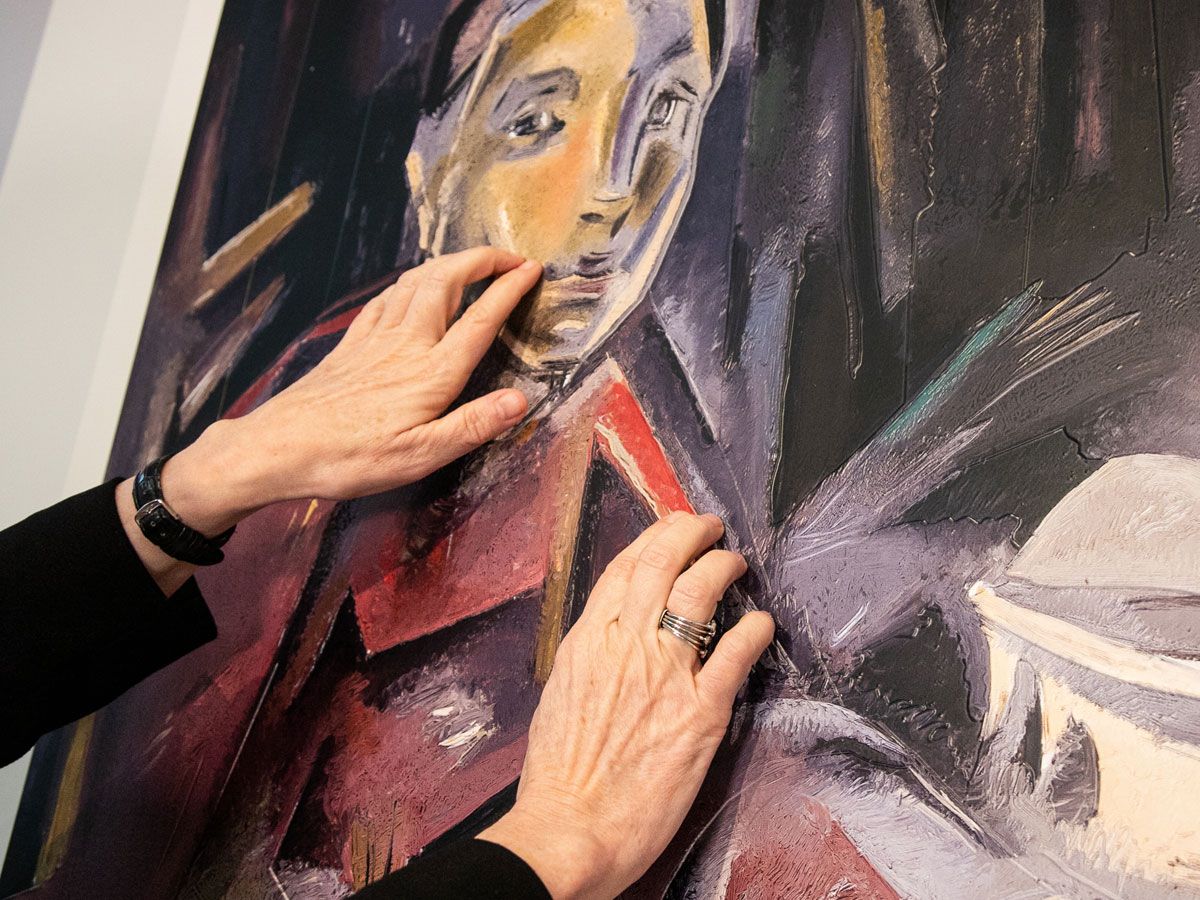Present day
17-01-23

Iberdrola and the museum resume Art to Touch
Visual accessibility programme
For two decades now, Iberdrola and the museum have been partnering in the Art to Touch programme, whose main goal is to make learning about and enjoying art accessible to individuals with visual impairments. It is one of the Bilbao museum’s pioneering programmes which has incorporated a ‘tactile tour’ into the museographic experience since 2012 via a device that reproduces works from the collection in relief. Along with the proposal geared at individuals with visual impairments, Art to Touch also offers a sensorial experience that raises all students’ awareness. Led by educational staff, the activity also comes with support materials and an audio guide in Basque, Spanish and English.
In its early editions, the programme was held at the museum, and after having welcomed almost 600 participants, the Education Department decided to expand its scope beyond the museum itself by starting it on a tour around schools in Bizkaia and Gipuzkoa. This extension of the museum’s educational activity beyond its headquarters has been underway since 2018, and since then 32 schools and 7,482 students have participated in it.
This month of January, it is starting a new tour around the schools of Gipuzkoa with the support of Iberdrola and the additional collaboration of the CRI (Resource Centre for the Educational Inclusion of Students with Visual Impairments), which is part of the support services for educational diversity of the Basque government’s Department of Education. Reservations are channelled through the museum’s Education Department at deac@bilbaomuseoa.eus / Tel. 94 439 61 41.
Art to Touch has gradually expanded its programme from five initial works to eight today, including a new one this year. In addition to increasing the number of panels, the addition of María Blanchard (Santander, 1881–Paris, 1932) signals a qualitative improvement in the representation of women artists, in this case with one of the most prominent painters in the cubist movement. Her work Femme assise (Seated Woman) —the figurative representation of a woman following the cubist code of faceted planes—is particularly suited to this programme.
Thus, these eight works complete a survey through influential periods and artists in art history: Noah’s Ark, a work from the Catalan Romanesque dated from the last third of the thirteenth century; El Greco’s Annunciation and José de Ribera’s Saint Sebastian Tended by the Holy Women, both from the Spanish School; the Italian Baroque painting Lot and his Daughters by Orazio Gentileschi; Seated Woman with a Child in her Arms by Mary Cassatt, one of the most emblematic painters of the impressionist movement; Lying Figure in Mirror by Francis Bacon; The Little Village Girl with a Red Carnation by the Basque artist Adolfo Guiard; and now, too, Femme assise (Seated Woman) by María Blanchard.

